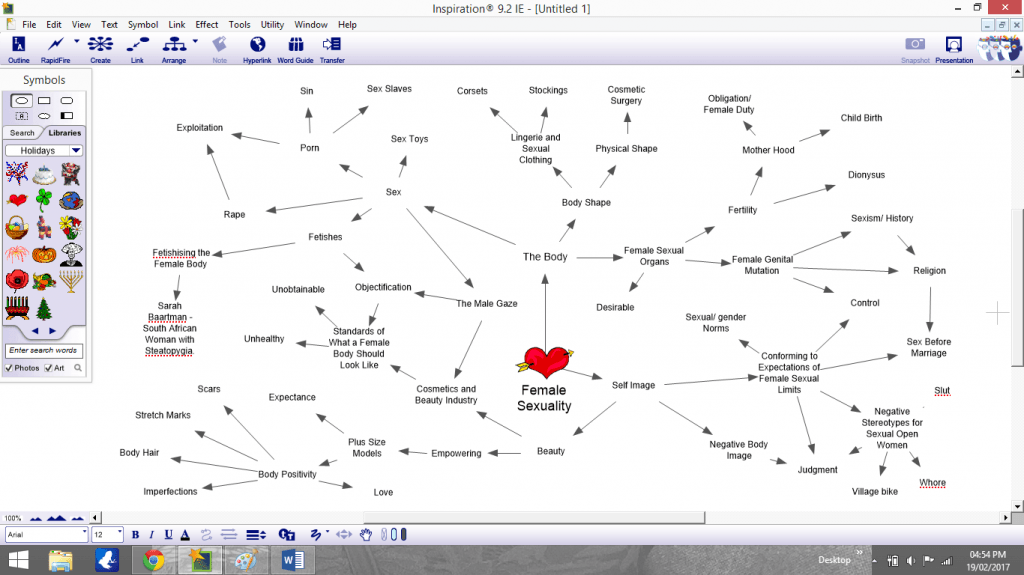During my process through the lessons so far, I have focused my ideas around Female Sexuality.
I have created a mind map to help me bring focus to my thoughts and create a center point of my piece. I have been moving towards the themes of control and objectification. From doing this I have decided to look at more historical theory to help me gain knowledge and facts around my subject. Along with this I want to look into female sexuality across the world including female genital mutilation and Nymphomania in Victorian insane asylums.
One point on the mind map I was also thinking about integrating into my work was the idea of corsets. How this item of clothing was worn main in the Victorian era, typically made of wood, horn, ivory, metal, or whalebone, was added to stiffen the front of the bodice. When thinking bout the tern corset many works come to might like tight, controlling , restrictive and uncomfortable. I could use a corset as a metaphor for the dominance of male rule in society specifically in the Victorian time period.
When thinking about how I would like to stage my topic I am thinking along the line of poetry, as I really enjoy the impact words can have on an audience if they are used correctly. I liked the way one of the previous years students used poetry and think it will be a successful way to get my topic across. I will look at words around my topic and play the formation. I want to find a more focused central idea before I do this.
I have been looking for pictures as inspiration these are the few that stuck out:
(Source: Google Images. Image By Laurie Penny) (Source: Google Images. Image by Alice Wellinger)
I like these two images as they are glorifying and glamorizing female pubic hair. Which is something that is thought of as gross, disgusting, unhygienic and unattractive. I like the use of unnatural colors as it could be used as metaphor for the natural growth of hair. It also gives the theme of the piece a sense of freedom.
Work Cited:
Penny, L (2011) The “C” Word.
Willinger, A (2014) Private Garden. Museum of American Illustration. New York.


